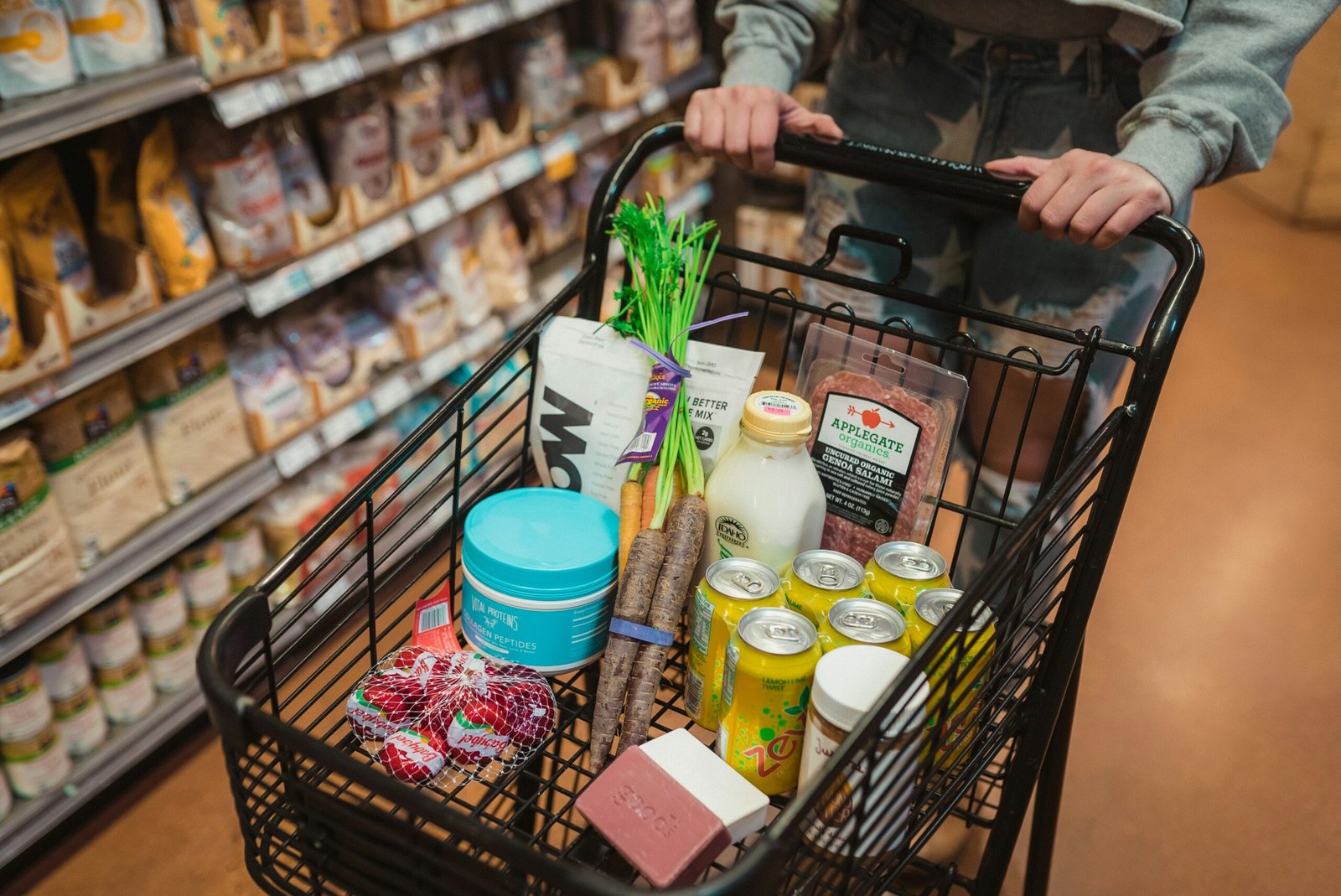Meal Prepping 101: Simplifying Nutrition for Active Lifestyles

Disclosure: This post may contain affiliate links. I could earn a commission if you make a purchase through these links, at no extra cost to you. Refer to my Affiliate Disclosure for details.
Introduction
Welcome to “Meal Prepping 101: Simplifying Nutrition for Active Lifestyles.” In this blog post, we will explore the concept of meal prepping and how it can benefit individuals with busy schedules who are looking to maintain a healthy diet. Whether you are a student, a working professional, or a busy parent, meal prepping can help you save time, money, and energy while ensuring that you are nourishing your body with nutritious meals.
What is Meal Prepping?
Meal prepping is the practice of planning and preparing your meals in advance. It involves cooking and portioning out meals or ingredients ahead of time, so they are ready to eat or easy to assemble when you need them. This could mean preparing a week’s worth of lunches on a Sunday afternoon or chopping vegetables and marinating meats to use throughout the week.
For a Healthy Balance Meal, you can view this link for Specialty Diets
Enjoy FREE shipping on orders $99 or more
The Benefits of Meal Prepping
Meal prepping offers numerous benefits for individuals with active lifestyles:
1. Time-Saving
One of the biggest advantages of meal prepping is the time it saves. By dedicating a few hours each week to plan and prepare your meals, you can free up valuable time during the week. Instead of spending time each day deciding what to cook and preparing meals from scratch, you can simply grab a pre-prepared meal or assemble a quick and healthy dish using pre-prepped ingredients.
2. Consistency in Nutrition
Meal prepping allows you to have control over your nutrition. By planning your meals in advance, you can ensure that they are well-balanced and meet your specific dietary needs. Whether you are following a particular diet or trying to incorporate more fruits, vegetables, or protein into your meals, meal prepping allows you to stay consistent with your nutrition goals.
*Disclosure: As an Amazon Associate I earn from qualifying purchases.
3. Cost-Effective
Meal prepping can also be cost-effective. By buying ingredients in bulk and cooking in larger quantities, you can save money on groceries. Additionally, by having pre-prepared meals or ingredients on hand, you are less likely to rely on expensive takeout or convenience foods when you are short on time or energy.
4. Portion Control
Portion control is crucial for maintaining a healthy diet. By pre-portioning your meals during the meal prepping process, you can avoid overeating and ensure that you are consuming the appropriate amount of calories for your goals. This can be especially beneficial for individuals who are trying to lose or maintain weight.
5. Reduced Stress
Meal prepping can significantly reduce stress, especially during busy weekdays. Knowing that you have nutritious meals ready to go can alleviate the pressure of having to cook every day. It also eliminates the need to make last-minute decisions about what to eat, which can be overwhelming and lead to unhealthy food choices.
Getting Started with Meal Prepping
If you are new to meal prepping, here are some steps to help you get started:
1. Plan Your Meals
Start by planning your meals for the week. Consider your schedule and choose recipes that are practical and easy to prepare in advance. Look for recipes that use similar ingredients to save time and money.
2. Make a Grocery List
Based on your meal plan, create a grocery list of all the ingredients you will need. Stick to your list when you go shopping to avoid impulse purchases and unnecessary items.
3. Set Aside Time for Prepping
Choose a day and time when you can dedicate a few hours to meal prepping. This could be a weekend day or a weekday evening when you have some free time. Block off this time in your schedule and treat it as a non-negotiable appointment with yourself.
4. Cook and Prepare
Start by cooking the main components of your meals, such as proteins, grains, and vegetables. Portion them out into individual containers or bags. You can also chop vegetables, wash fruits, and prepare any dressings or sauces ahead of time.
5. Store Properly
Proper storage is essential to maintain the quality and safety of your pre-prepped meals. Invest in airtight containers that are microwave and freezer-safe. Label each container with the contents and date to ensure that you use them within a safe time frame.
6. Mix and Match
Don’t be afraid to mix and match your pre-prepped ingredients throughout the week. This will prevent boredom and allow you to create different combinations and flavors. For example, you can use pre-cooked chicken in salads, wraps, or stir-fries.
Meal Prepping Tips and Tricks
Here are some additional tips and tricks to make your meal prepping experience even more efficient and enjoyable:
1. Start Small
If you are new to meal prepping, start small and gradually increase the number of meals you prepare. Begin with prepping just a few lunches or dinners for the week, and as you become more comfortable, you can expand to include breakfasts and snacks.
2. Invest in Quality Containers
Invest in good quality containers that are durable, leak-proof, and easy to clean. Look for containers that are stackable to save space in your fridge or freezer. Glass containers are a great option as they are microwave-safe and do not retain odors.
3. Use Versatile Ingredients
Choose versatile ingredients that can be used in multiple dishes. For example, roasted vegetables can be added to salads, grain bowls, or wraps. This will help you save time and reduce waste.
4. Don’t Forget Snacks
Include pre-prepped snacks in your meal prep routine. Cut up fruits and vegetables, portion out nuts or trail mix, or prepare homemade energy bars. Having healthy snacks readily available will prevent you from reaching for unhealthy options when hunger strikes.
5. Embrace Freezing
Freezing meals or ingredients can extend their shelf life and give you more variety throughout the week. Soups, stews, and casseroles are great options for freezing. Just make sure to label and date each item to keep track of how long it has been stored.
6. Get Creative with Seasonings
Experiment with different herbs, spices, and marinades to add flavor to your pre-prepped meals. This will prevent them from becoming monotonous and keep your taste buds excited.
Incorporating Meal Prepping into Your Routine
Meal prepping can be a game-changer for individuals with active lifestyles. Here are some tips on how to incorporate meal prepping into your routine:
1. Schedule Your Meal Prep Time
Block off a specific time in your schedule each week for meal prepping. Treat it as a non-negotiable appointment and prioritize it just like you would any other important task or commitment.
2. Make it a Family Affair
Get your family or roommates involved in the meal prepping process. Assign tasks to each person, such as chopping vegetables or portioning out meals. Not only will this help you save time, but it can also be a fun and productive bonding activity.
3. Plan for Leftovers
When you are cooking your meals, intentionally make extra portions to have as leftovers. This will save you even more time and ensure that you have meals for days when you don’t have time to meal prep.
4. Stay Flexible
While meal prepping can provide structure and convenience, it’s important to stay flexible. Life happens, and there may be days when you don’t have time to meal prep or forget to bring your pre-prepped meals. Have backup options like healthy frozen meals or quick and easy recipes that you can whip up in a pinch.
Conclusion
Meal prepping is a valuable tool for simplifying nutrition and maintaining a healthy diet, especially for individuals with active lifestyles. By dedicating a few hours each week to plan and prepare your meals, you can save time, money, and stress while ensuring that you are nourishing your body with nutritious meals. So, start incorporating meal prepping into your routine and experience the benefits firsthand!

Disclosure: This post may contain affiliate links. I could earn a commission if you make a purchase through these links, at no extra cost to you. Refer to my Affiliate Disclosure for details.
